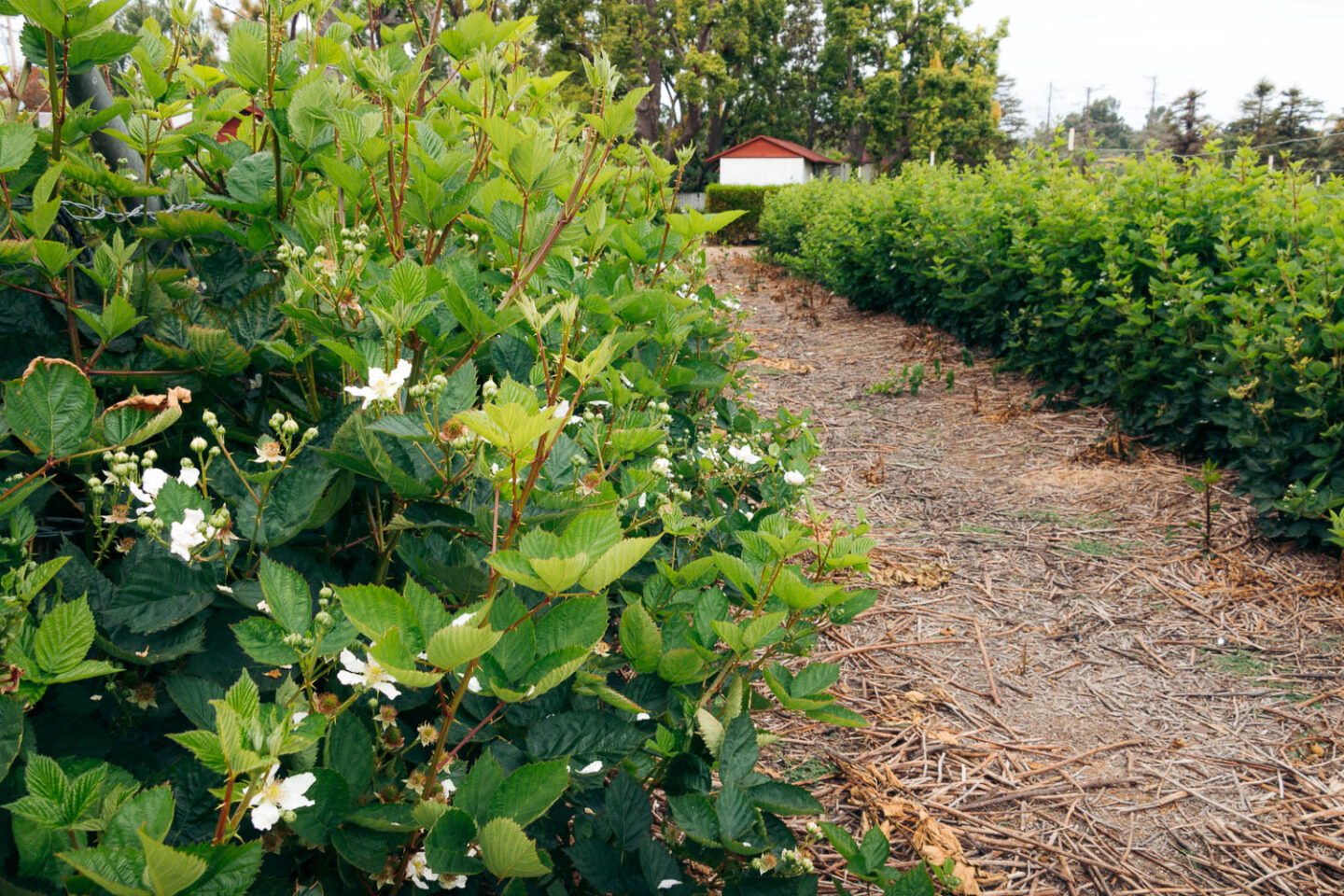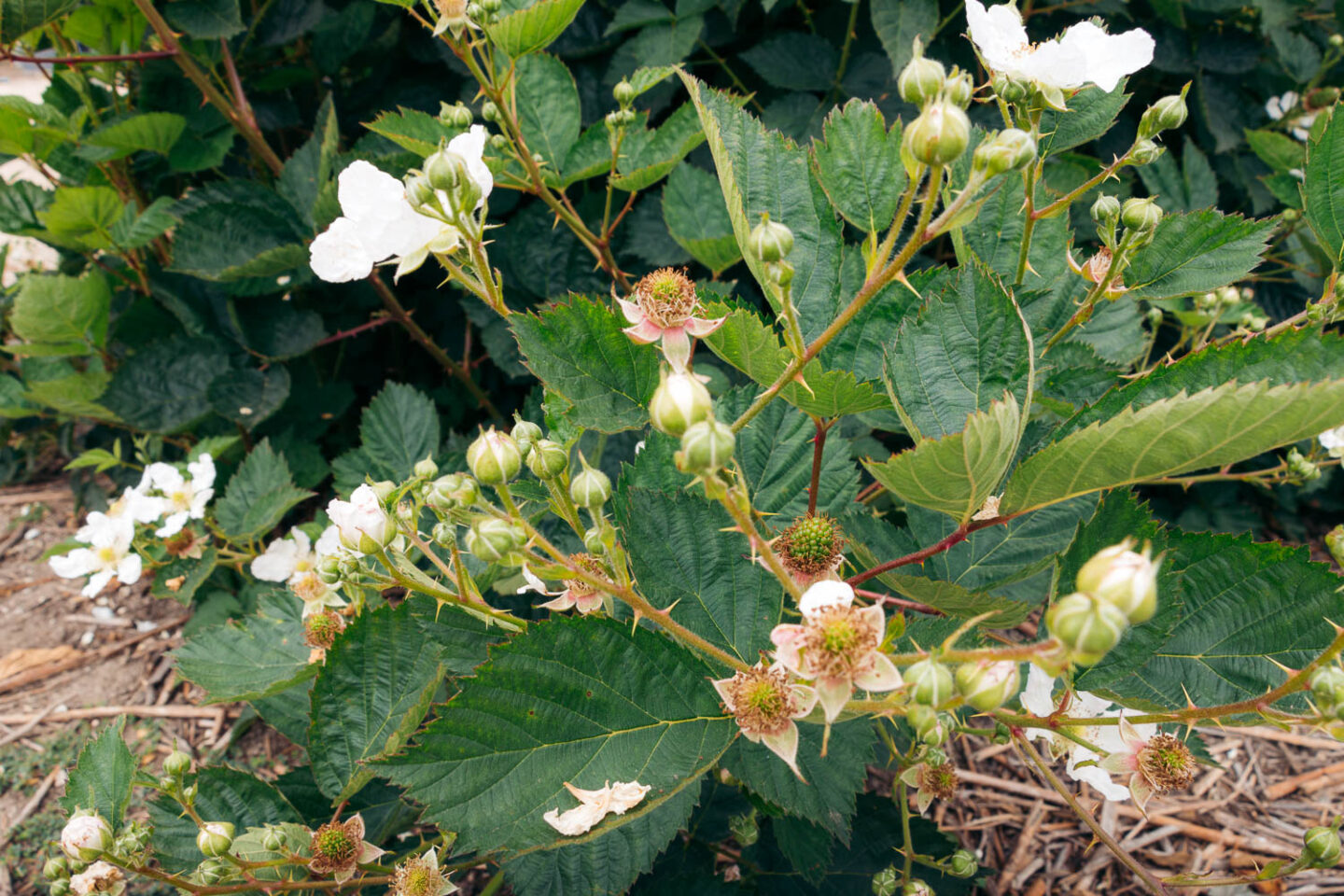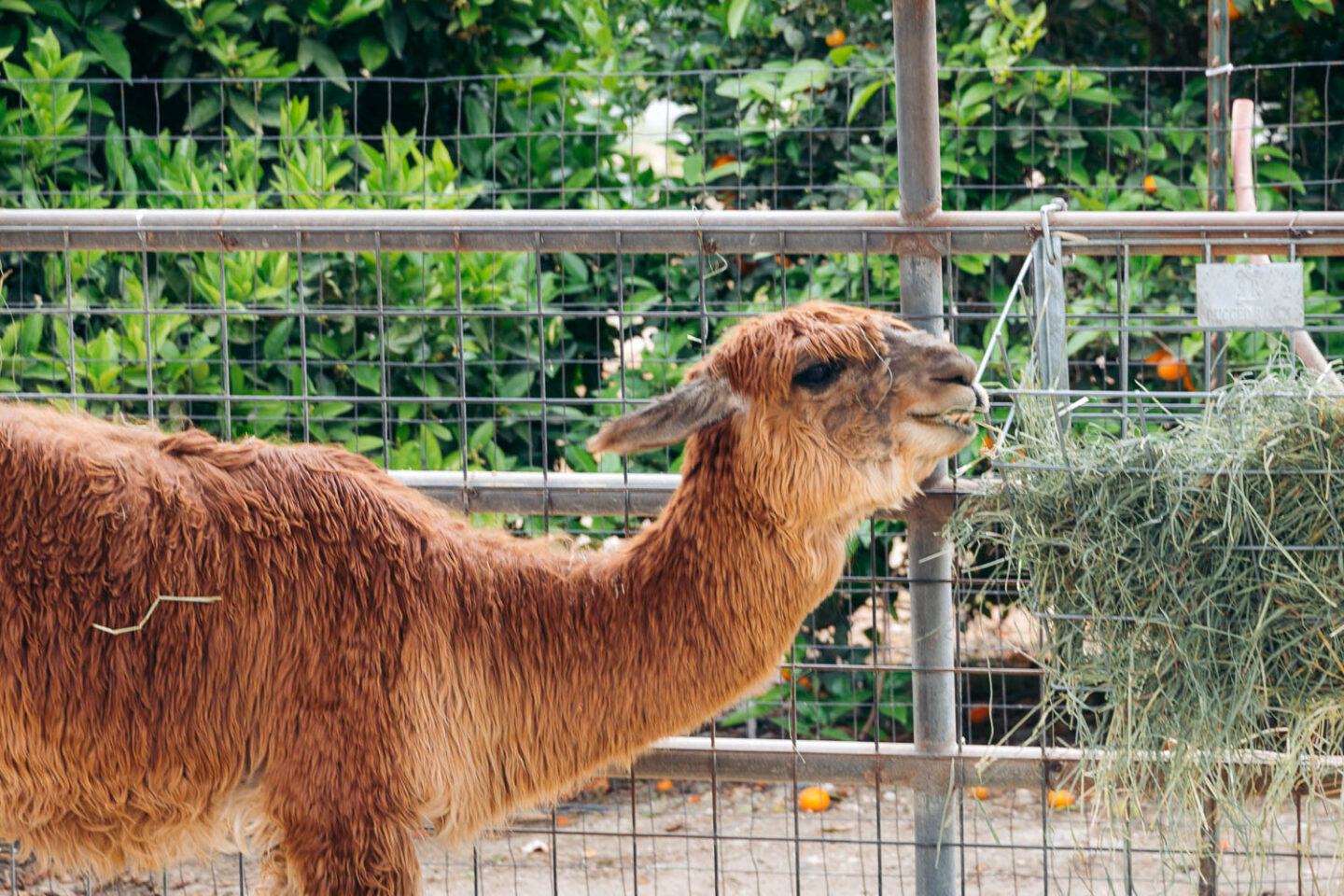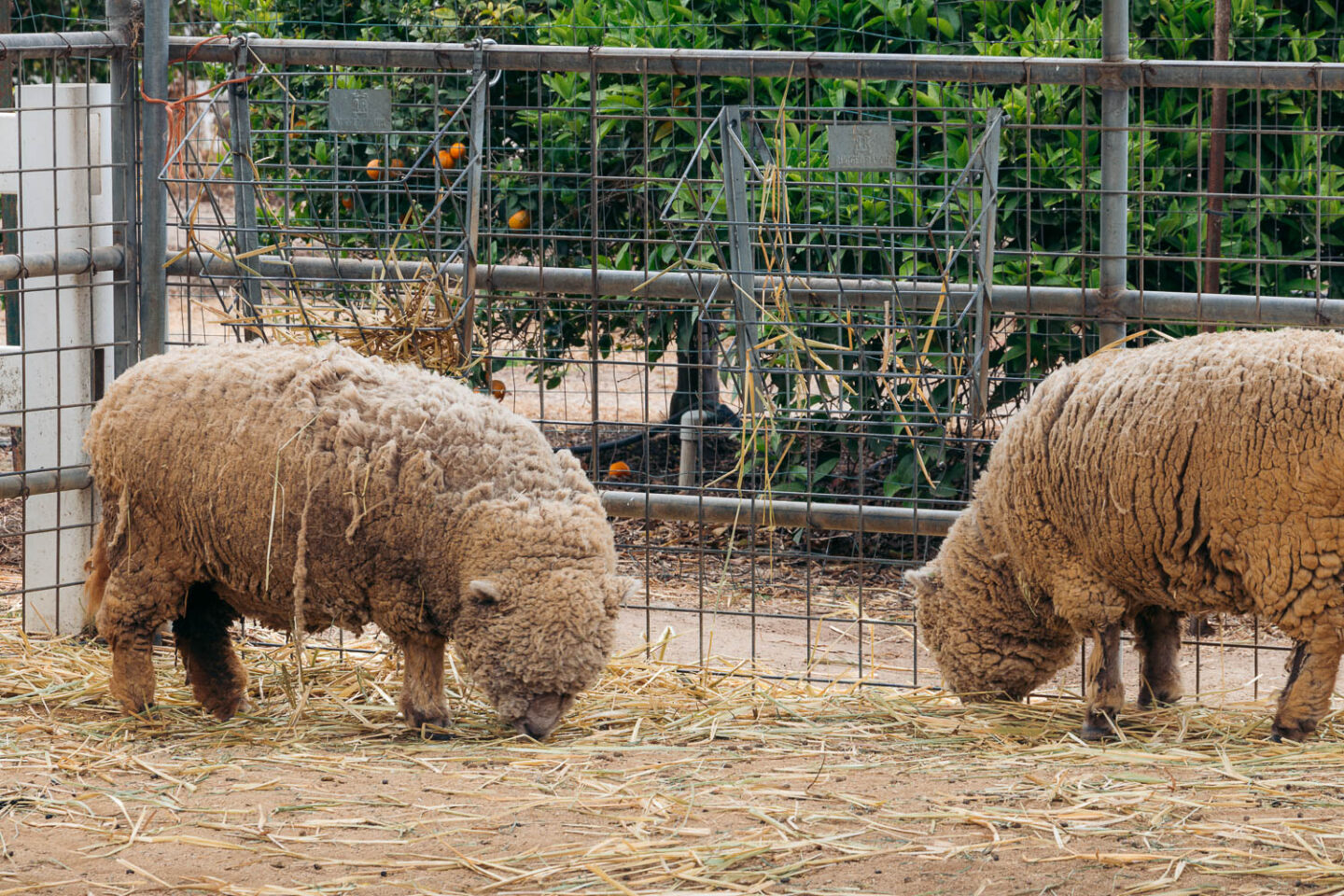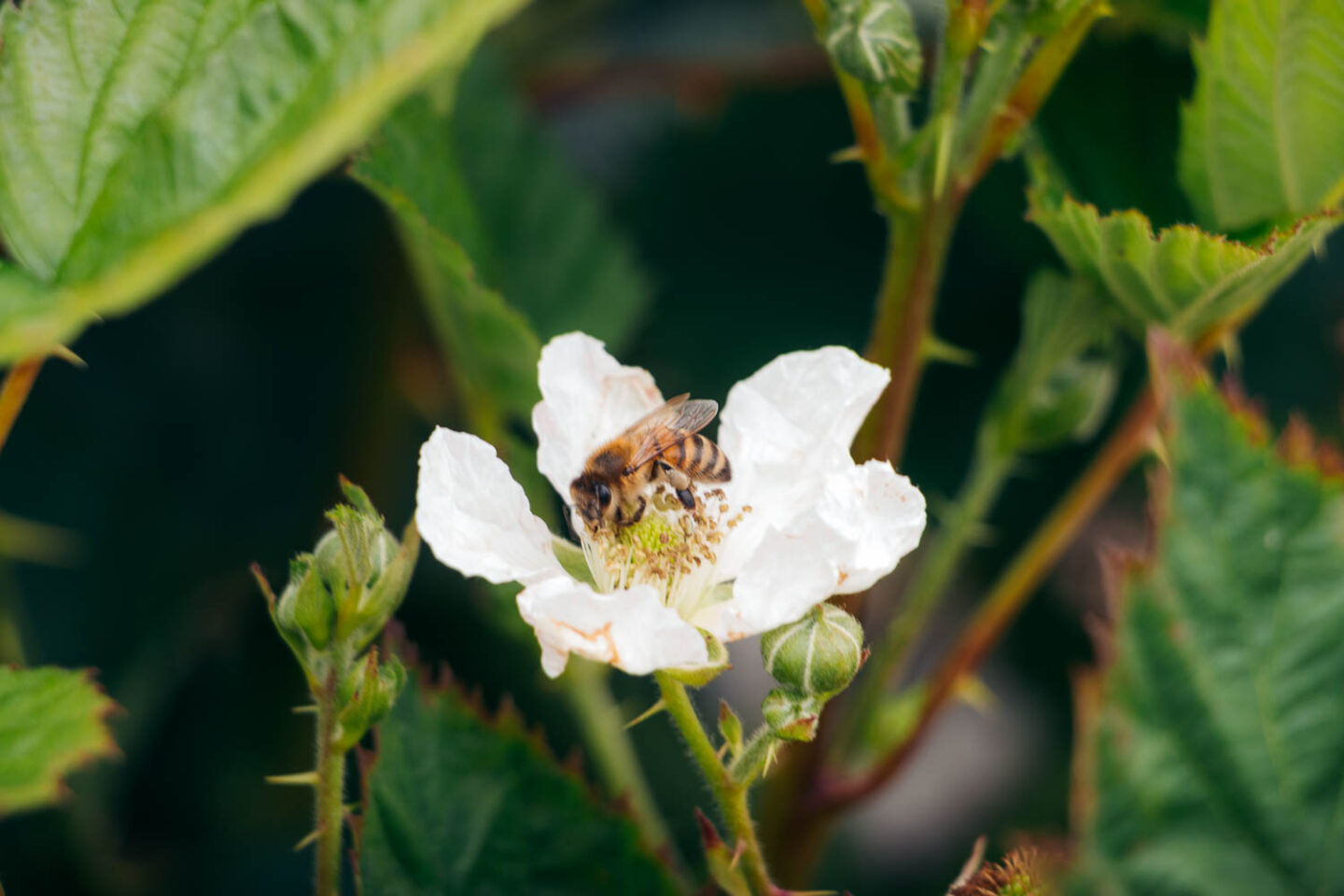California grows its strawberries using slightly different farming techniques than I’m used to.
Last updated: March 23, 2025
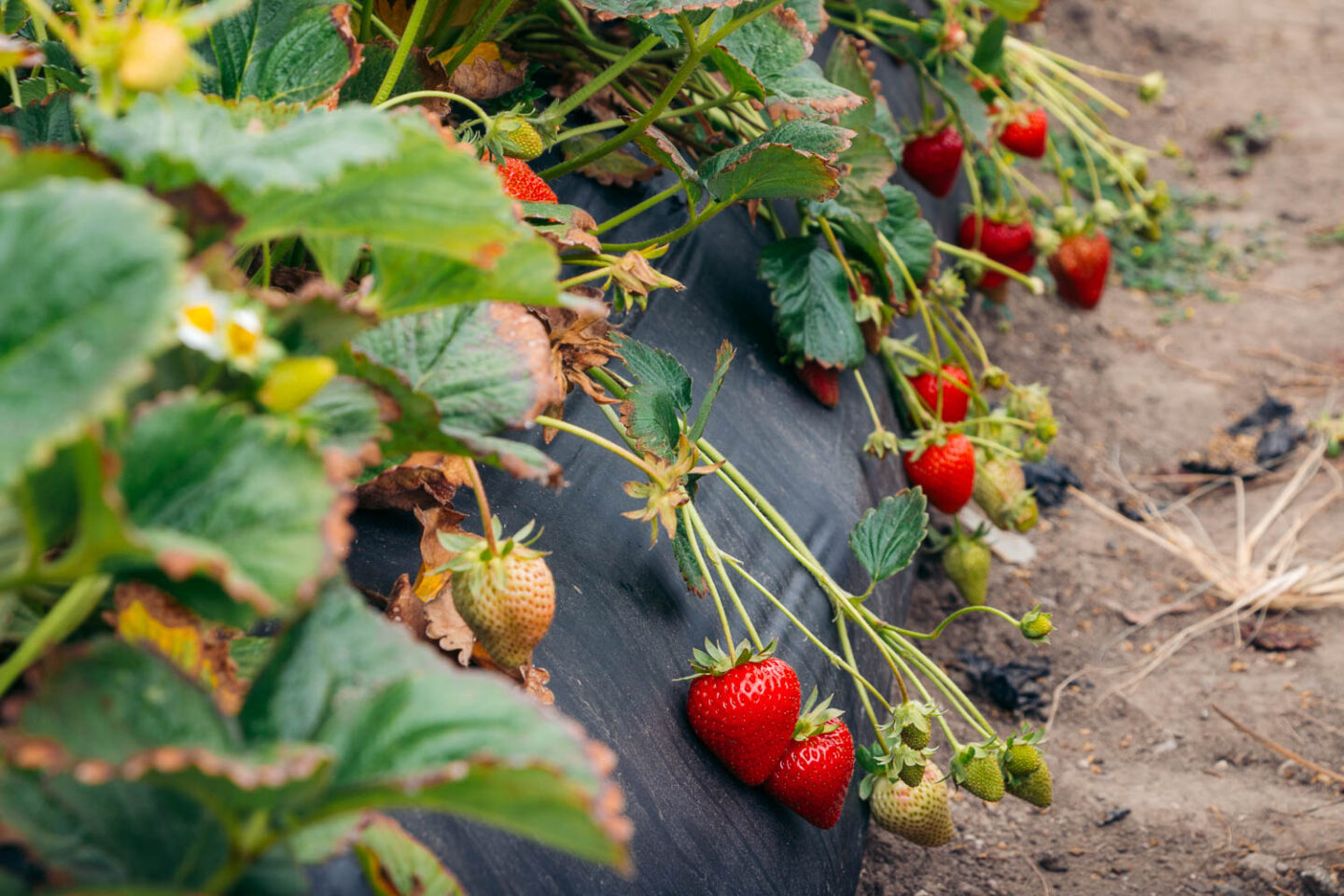
Growing Strawberries in California
When summer is here, so are sweet and juicy strawberries. In California, though, strawberries can grow all year round. Thanks to the mild California climate, local farms are able to harvest a few crops every year. Acres of land with familiar short green plants with red berries at the end of long stems come into view along secluded roads all over the state.
But California strawberry growing techniques are slightly different from what I’ve seen or done before.
Strawberry fields in California look almost the same. Endless beds with raised rows covered with landscape fabric or black plastic with only strawberry plants sticking out of the small holes… This is a familiar sight on the farms specializing in growing the popular berries all over the state.
For me growing up in a rural area in Eastern Europe, this looked odd. A strawberry plot had always highlighted our medium-sized garden. Throughout spring, we made sure that this plot was well-watered and free of any weeds. But as soon as the strawberry plants got bigger, grew their runners, and white bloom festively covered their crowns, any weeding had to be stopped until the berry season was over.
With this experience under my belt, the first time I saw large California strawberry fields generously covered with black plastic, I assumed it was done to keep either the moisture in or the weeds out.
Pulling out the unwanted plants on a field that doesn’t have an end to it looked like an overwhelming task. Strawberries can be finicky. They surely don’t like to share their territory with the unwelcome guests.
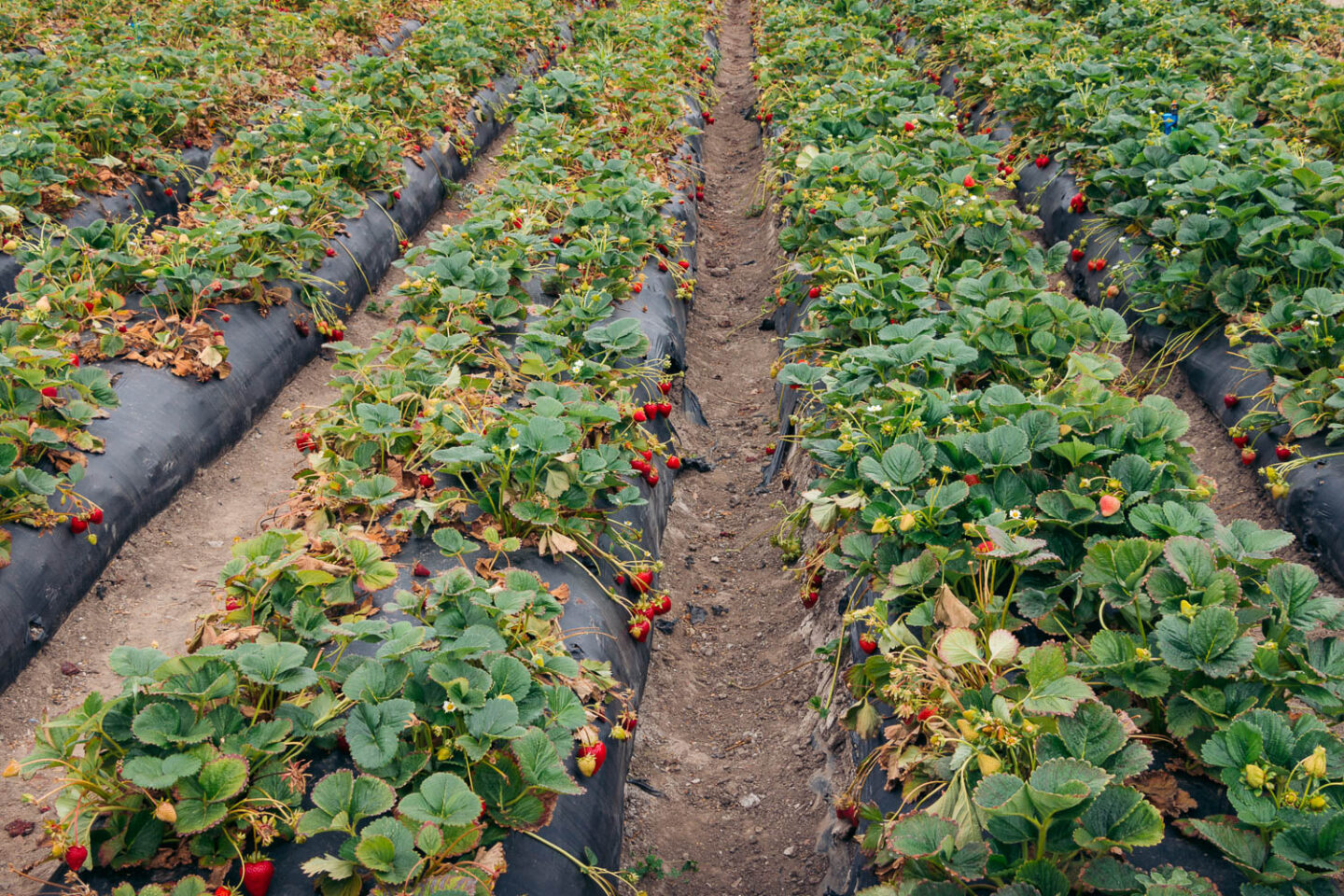
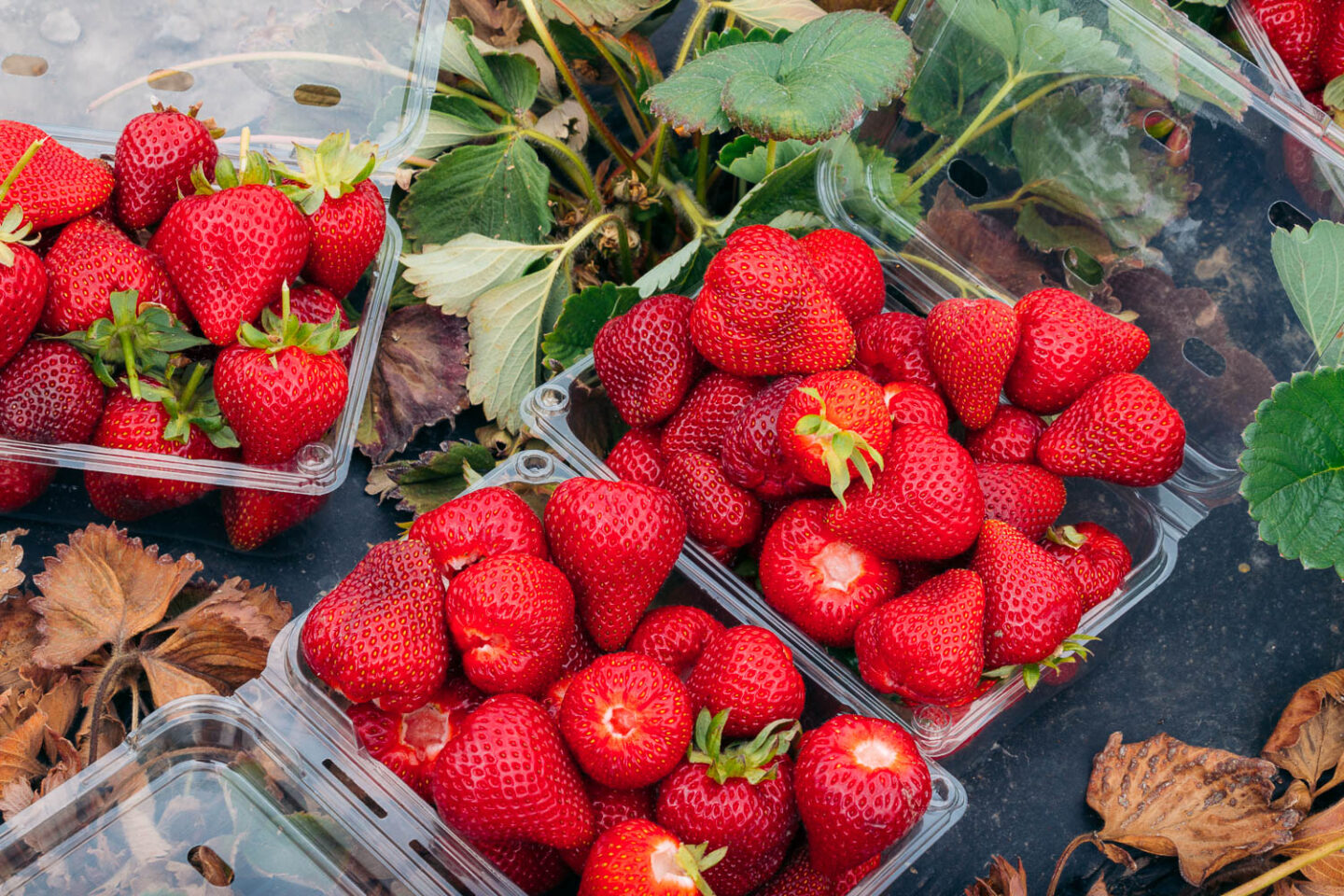
Why Is There Landscape Fabric on Strawberry Fields in California?
Turned out, my guess wasn’t far from the truth. Indeed, the landscape fabric used on the strawberry fields all over California keeps the weeds away. As the largest producer of strawberries in the country (California grows three-fourths of the national supply of the berries, which accumulates to about 1 billion pounds a year), the Golden State devotes large parcels of land to this quintessential summer plant.
Weeding out a strawberry field that stretches out for tens of thousand of acres can need an army, no less than that. California farmers found a simpler solution. They cover their strawberry plantations with landscape fabric or black plastic.
Once the first step is complete, the farmers cut an “X” in the weed cloth every 8-10 inches in double rows that are spaced 12 inches apart. Then comes digging a planting hole at every “X” and planting each strawberry plant so it is level with surrounding soil or slightly rising above the ground.
This California strawberry growing technique proved to be very effective from keeping away the weeds. But at the same time, the farming method is not ideal.
While initially doing an amazing job of suppressing the weeds, the cloth can support the weed growth at later stages. If not well-maintained, the landscape fabric with any mulch or soil on top of it can still allow the weed to grow. Weed seeds then disperse by wind, and if not taken a proper care the entire strawberry field can be ruined.
A couple of weeks ago, we could see this minor drawback of using the landscape cloth on the California’s strawberry fields at Underwood Family Farms-Somis Farm Center. The weed situation here, however, wasn’t that bad.
At the same time while keeping the strawberry fields weed-free, the landscape fabric and mostly the black plastic can prevent nutrients from reaching the soil.
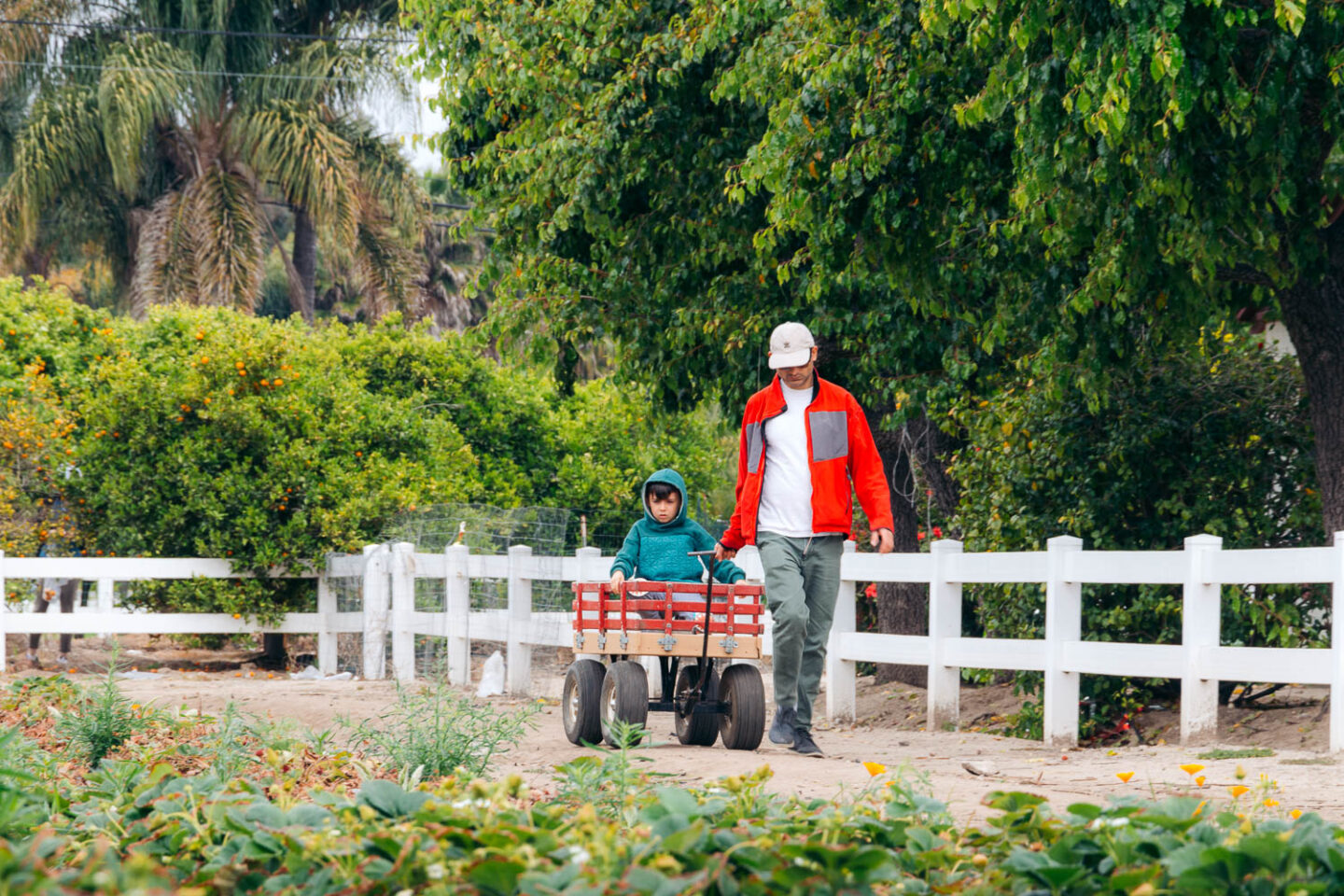
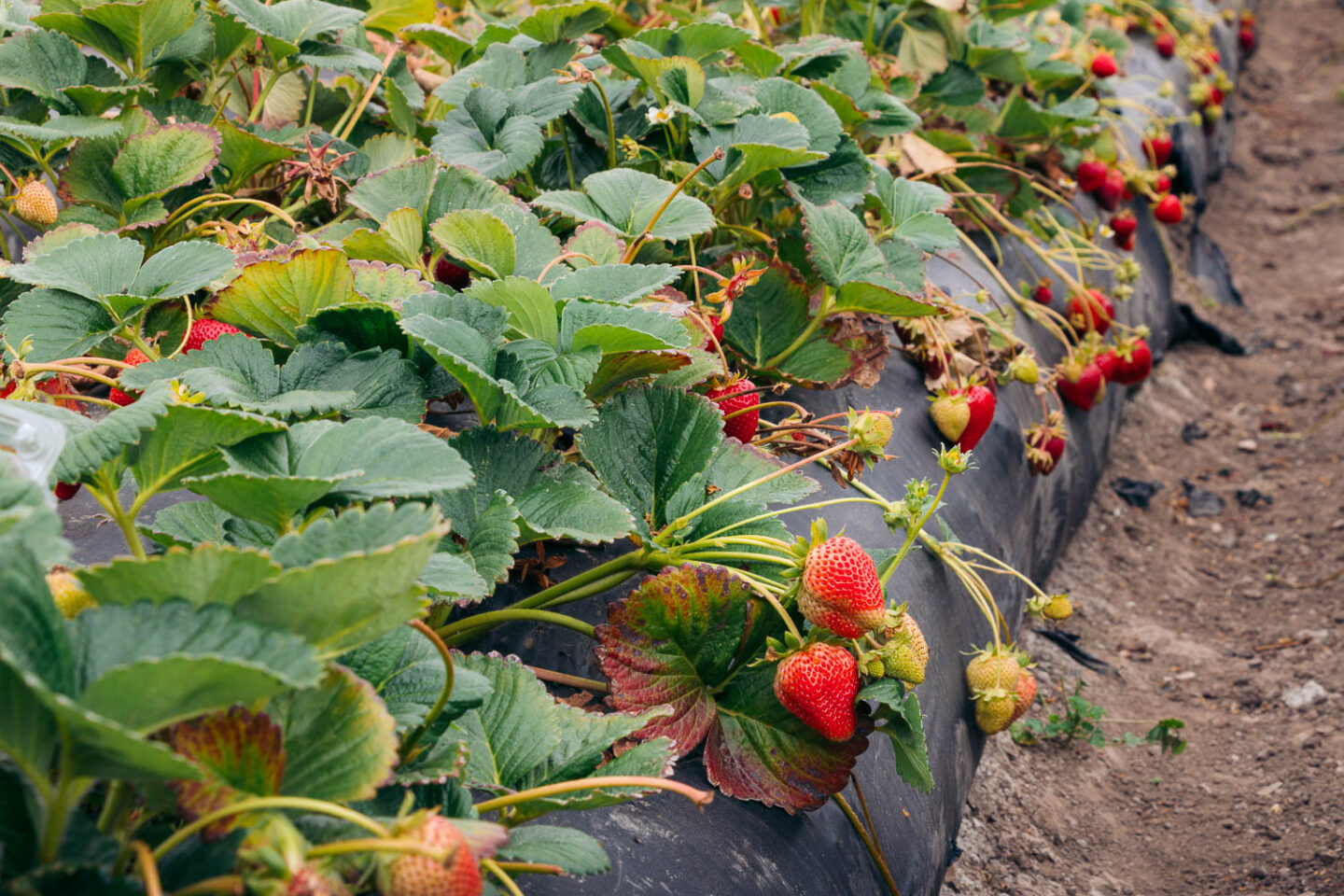
How California Grows Its Strawberries: Irrigation
Farmers in California water their young strawberry plants with overhead sprinkles for three to five weeks, until the plants are well established. Then they switch to a drip irrigation system to keep water away from the developing berries.
Strawberries have shallow roots. Keeping the fields moist is one of the requirements to have an abundant crop.
California’s farms normally don’t use any overhead irrigation systems to water their mature strawberry plants. If they do, steer clear of buying the berries from them. In this case, the strawberries become bigger by soaking up more moisture, but their flavor decreases.
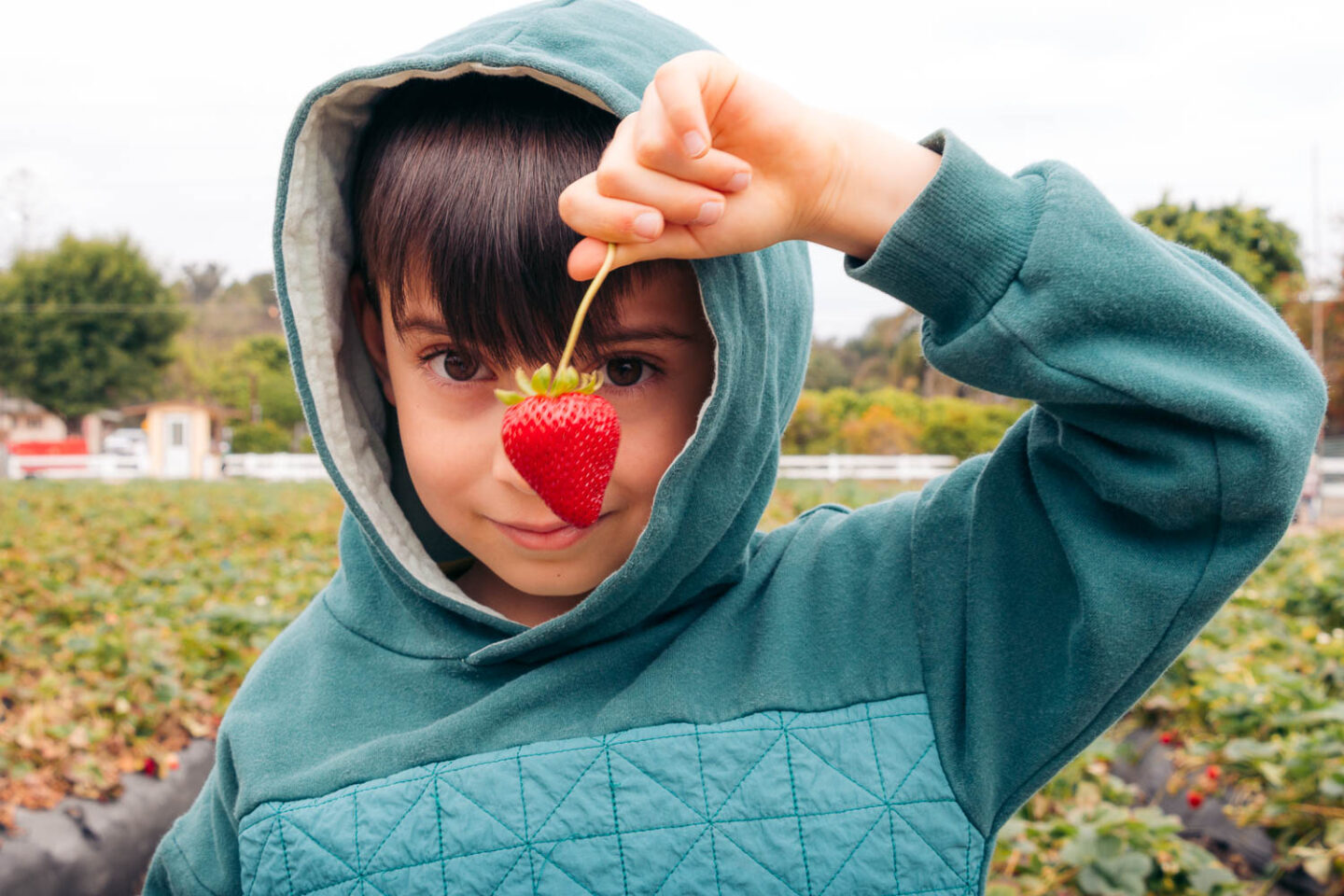
Underwood Family Farms-Somis Farm Center
The Underwood Family Farms-Somis Center that I mentioned before is relatively small. Apart from the strawberries, the farm grows blueberries, raspberries, blackberries, and tangerines. A few domesticated animals, such as goats, llamas, and chickens, are also here, but more for a rural feel and a complete immersion into the farm life than any other purposes.
The strawberry season in California lasts from April through July, with May and June considering the peak of the season. At the end of May, blueberries slowly catch up with the popular summer berries.
Blueberries are not as fussy as strawberries. You can plant them directly into the soil. No weed barrier fabric is needed. But honestly it was the first time I was picking garden blueberries.
When I was a kid, my mom and I would spend days in a forest picking the berries to make jam or dry them. The wild blueberry plants were shorter. And given the nature of the forest, mosquitoes, not bees, were almost always present.
The blueberry season at Underwood Family Farms-Somis Farm Center starts in June. In July, the farm attracts raspberry lovers. And finally, in August you come here to pick your own blackberries. With this berry schedule, the farm stays busy the entire season.
Unlike the rest of California that grows strawberries throughout the year, Underwood Family Farms sticks to more traditional farming techniques. Once the berry season is over, it attracts its customers with seasonal produce, local honey, and some other “treasures”. Dylan considered their rock box no less than a treasure chest.
Address: 5696 E Los Angeles Ave, Somis, CA 93066
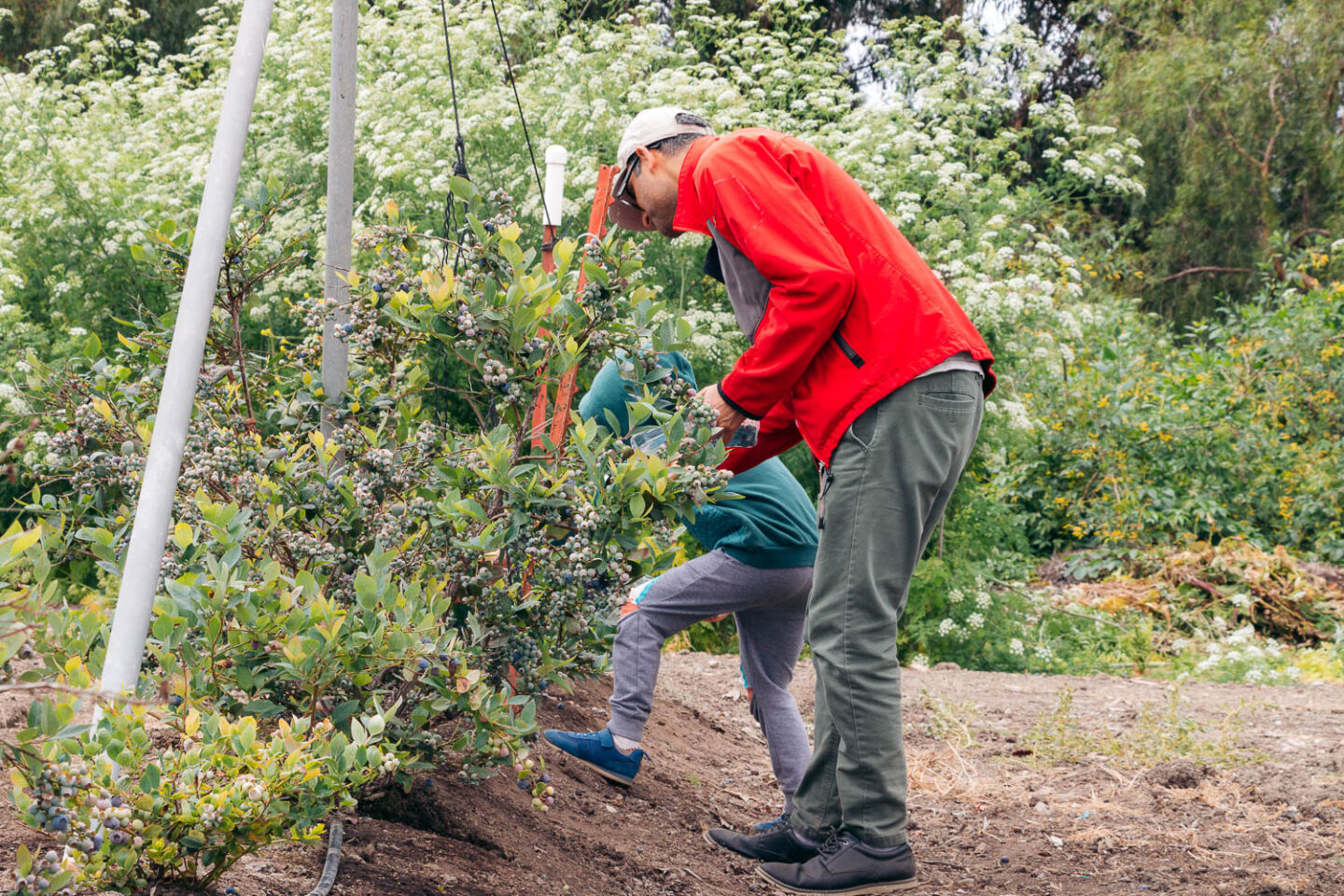
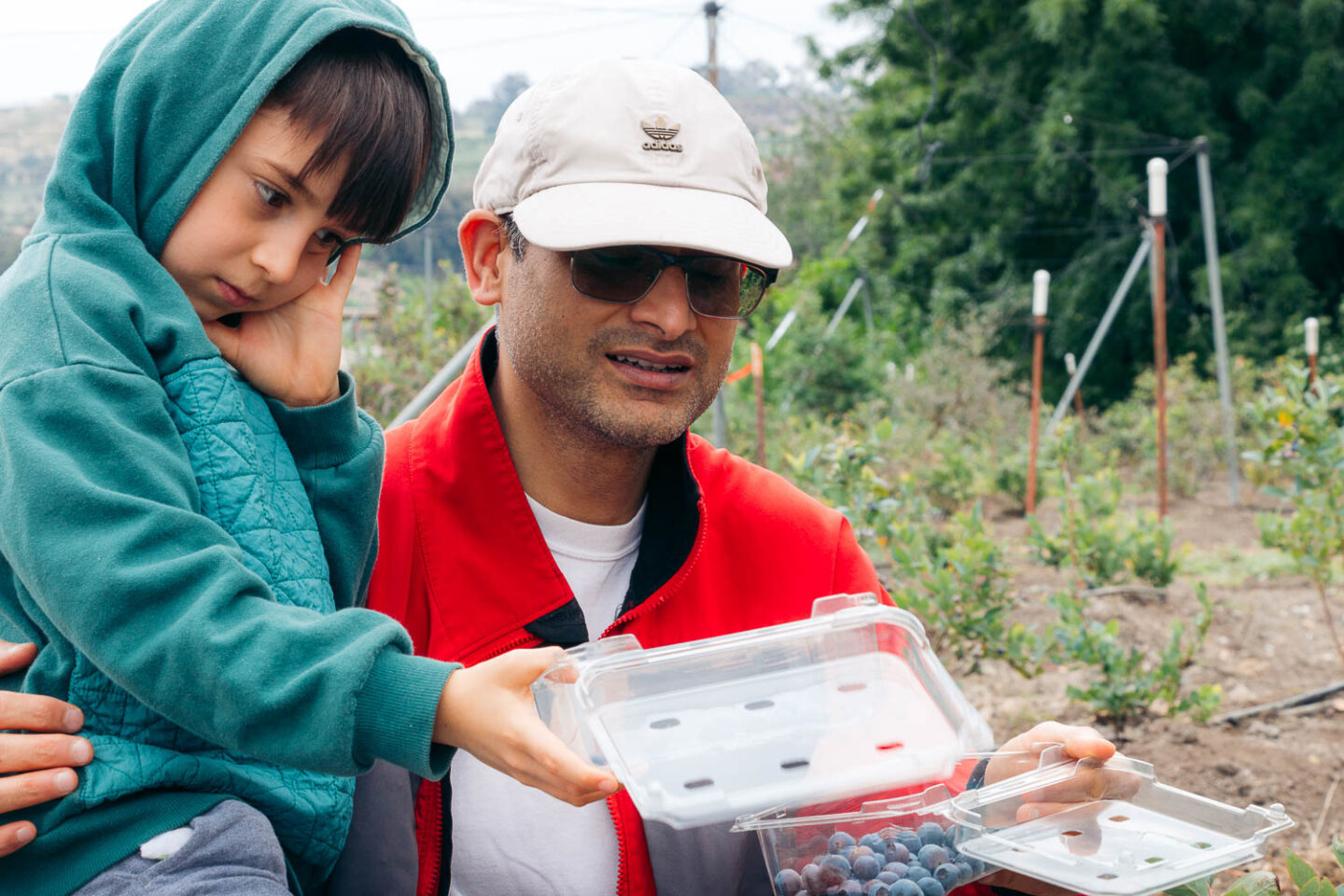
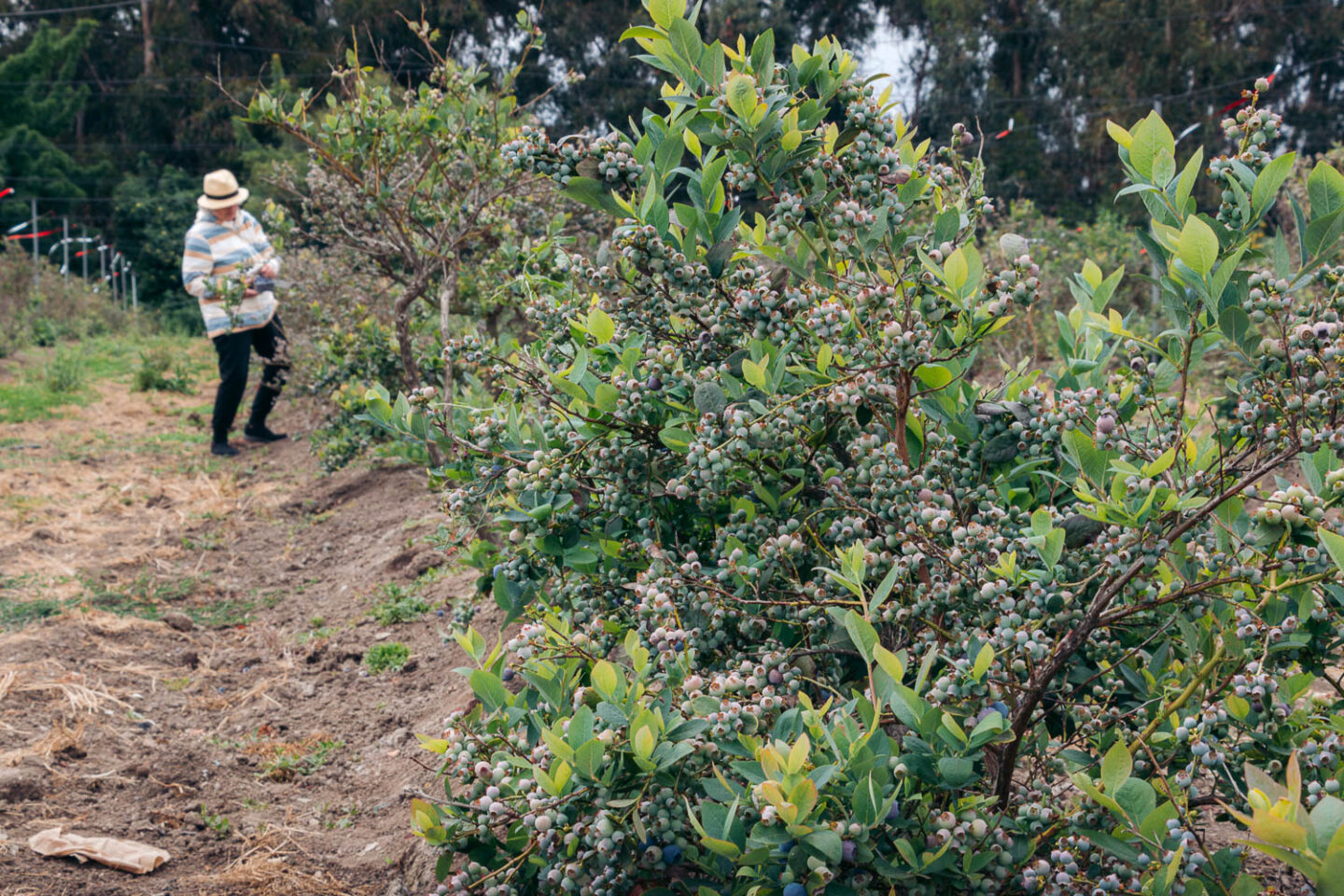
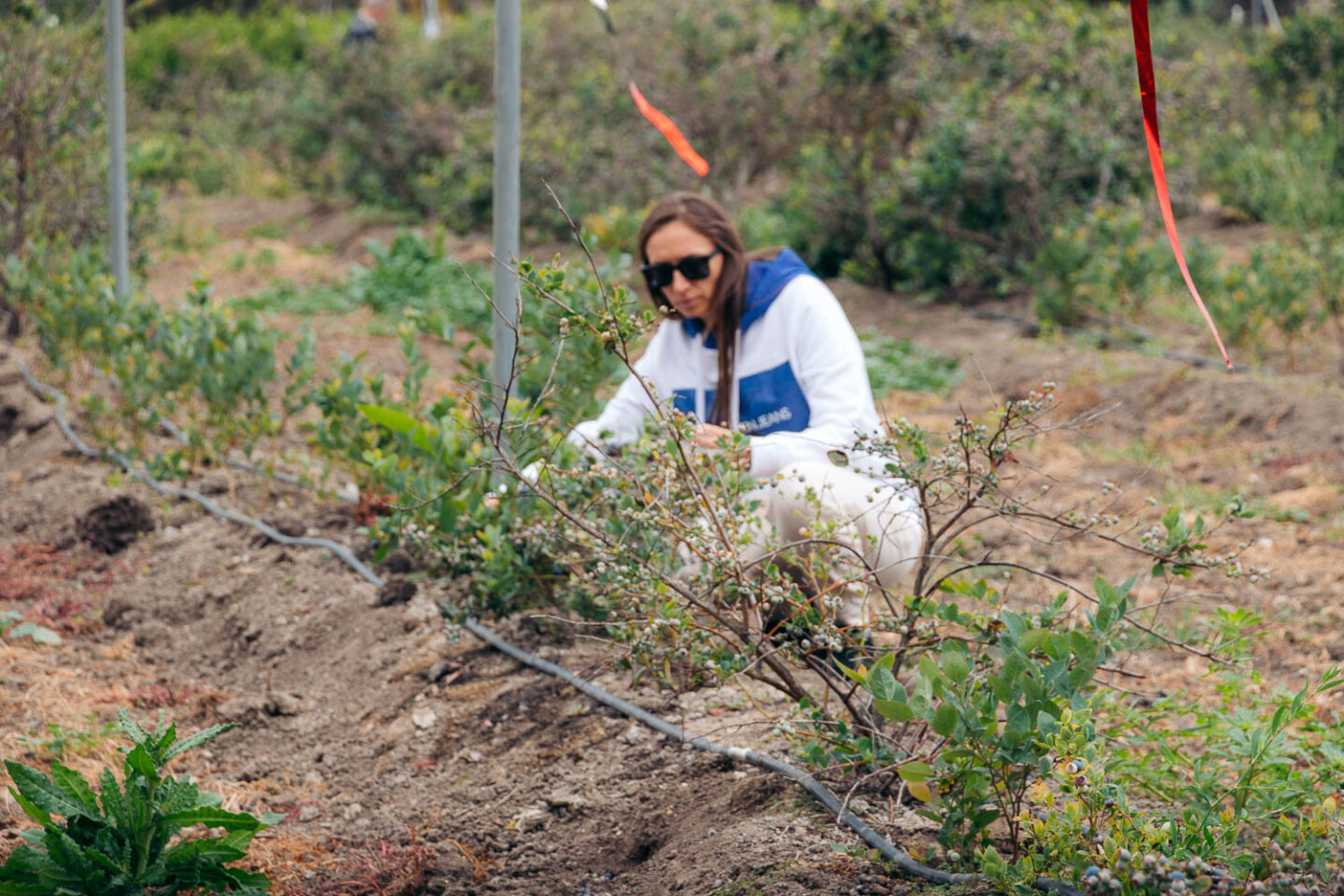
Underwood Family Farms – Moorpark
You can have similar experiences and get fresh produce at another Underwood Family Farms, located in Moorpark roughly 10 miles away.
Apart from the seasonal fruits and vegetables, this property is loaded with kids’ entertainment, such as a bounce house, train and car rides. Kids love it. Entire families visit the place and have picnics on green lawns between animal stables and displays. The place gets busy, to say the least. Too busy and noisy for me…
We went to this farm only to pick our own sunflowers that were not even blooming yet… Probably next time we should not only ask the staff if they have sunflowers, but also if it’s the right season to pick them.
Address: 3370 Sunset Valley Rd, Moorpark, CA 93021
NOTE: I am not associated with either of these farms. Please do not contact me about any purchasing/selling related questions.
